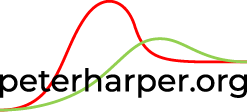The famous German poet Johann von Goethe sent this poem to a friend. Of course it is in German, and is about the strong split in the ginkgo leaf, a bit like the two halves of the human brain. One side represents Reason, the other Imagination.
Although my obsession with real, physical sustainability continues, I have found that simply talking about it, presenting facts and so on, has little effect. We need drama, stories, imagination. Hence The continuing Trials of Daisy the Cow, Another Piece of Political Theatre, and A Chat-Show Interview with a Water Molecule, all on previous blogs. I sometimes think of these as ‘Ginkgo Events’, after a poem by Goethe, about the dual nature of our minds, symbolised by the leaf of the Ginkgo tree: the factual/scientific and the mythical/artistic. Ginkgo Events try to combine the two sides of our natures in a loving embrace.
Recently I took part in another of these events, initiated by a multimedia visual artist, Claire Todd. Claire asked, if trees could speak, what might they say? She asked me to ‘interpret’ for them, and dressed me up as a kind of tree shaman. Did it transform the dry number-cruncher into a rhapsodic bard? Well yes, it took me by surprise. There was plenty of science, but that creates stories too. Imagine the trees in southern Europe, creeping north as the world emerged from the ice age, like grandmother’s footsteps, some making it early, later regarded as natives; some too late to cross the widening channel, but brought as seeds by birds or people, so considered ‘immigrants’, even the mighty beeches!
I found myself speaking in tongues, tree-poetry in Japanese, German, Persian and old Welsh; playing long-forgotten tunes on long-forgotten wooden instruments like the cornamuse, bowed psaltery and shebabbeh; telling tales of ancient forests, ice ages, blasted trees and the wood-wide web; remembering the queer old myths, like Odin hanging upside down for nine days from the sacred ash, and sacrificing one of his eyes, just so he could learn the secret of the runes – runes we saw etched on the branches by lichens with lineages even older than the trees themselves.
There was a lot to see and say. The magnolias inventing the insect-attracting flower in the time of the dinosaurs, establishing a collaboration that still dominates both the plant and animal kingdoms. Then the yews and their long association with archery and churchyards and the two-fingered salute; the crab-apples roasted by Greasy Joan; the saucy social sorcery of pigs and beeches; the association of hazel with dowsing; maples, Roman legionaries, and spear shafts; the long-lost elms; how to use a froe; houses made from oaken crucks and riven wattling; the wailing of bamboo pipes as a metaphor for the soul’s quest; Taiko drum sticks from the kiri tree, light as balsa, strong as oak. Those trees, they’re so garrulous.
At the end, St Bartholomew’s Church offered us tea and home-made cakes. It was a parfit, gentil way to bring us all back to earth. Me too!
Claire and I created a kind of script with pictures, here.
Goethe’s original letter,with pressed leaves
Here is the original text of Goethe’s poem: And this, I think, is what it means
Dieses Baums Blatt, der von Osten The leaf of this tree, which, found in the East, has
Meinem Garten anvertraut, made its home in my garden,
Giebt geheimen Sinn zu kosten, offers a hidden message to those of a discerning
Wie's den Wissenden erbaut, sensibility.
Ist es Ein lebendig Wesen, Is it really a single leaf, or is it trying to be a pair?
Das sich in sich selbst getrennt?
Sind es zwei, die sich erlesen,
Daß man sie als Eines kennt?
Solche Frage zu erwidern, Perhaps like me and my work, it is both:
Fand ich wohl den rechten Sinn, Double and single at the same time.
Fühlst du nicht an meinen Liedern,
Daß ich Eins und doppelt bin?


